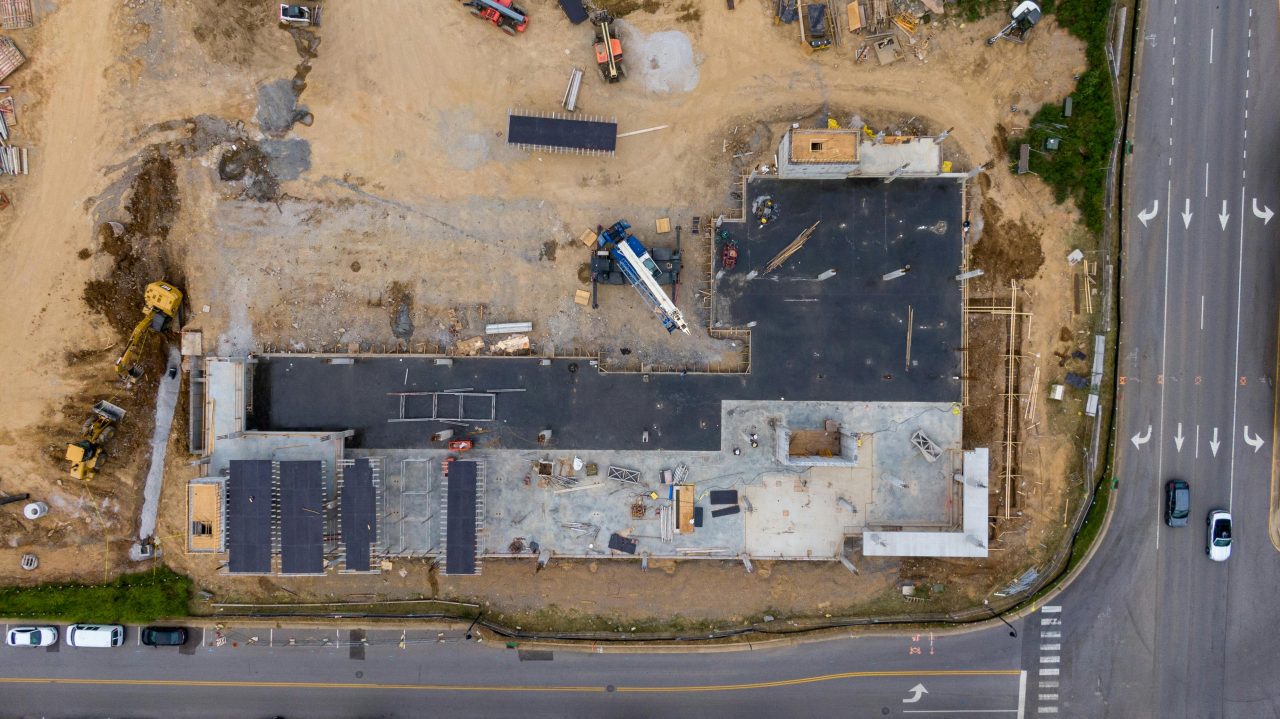
Automating Progress Updates:
From Manual Reports to AI-Powered Communication
Simplifying Progress Reporting
As a Project Manager, one of the most dreaded tasks on my weekly to-do list has always been preparing progress reports for stakeholders. It is not that I don't value keeping clients informed; I absolutely do. The challenge lies in the way these reports are typically handled. Manually compiling updates every Friday afternoon is time-consuming and frustrating, and it often feels like a process stuck in the past.
Fortunately, there are better ways to approach this task. By leveraging AI, you can significantly reduce the time and effort it takes to deliver meaningful updates. In this post, I will show you some practical tools and strategies you can start using today, along with ideas for moving toward fully automated solutions.
Why We Need to Rethink Project Updates
Construction projects are only getting more complex. Today, you have to manage more stakeholders, more moving parts, and higher expectations for transparency. Owners want real-time updates about progress and budget impacts. The design team needs to stay informed about field conditions and installation challenges. Executives require clear insights into risks and opportunities to make informed decisions.
Keeping everyone aligned is more important than ever. However, the traditional way of managing project updates is simply not keeping up with these growing demands. It is time to rethink how we approach this critical aspect of project management.
The Real Cost of Manual Updates
To understand why the old methods are not working, let's break down what the process of creating manual updates typically looks like. Most Project Managers spend anywhere from two to four hours each week collecting data and compiling reports. In a perfect world, where all reports are submitted on time, all documentation is properly organized, and all details align seamlessly, this might only take a couple of hours. However, as you probably know, that perfect world rarely exists.
In reality, I often spent hours chasing down incomplete reports, digging through email threads for key details, and reconciling conflicting information from different sources. It was not just frustrating; it was an inefficient use of time.
The problem goes beyond just the time spent on these tasks. Every hour you dedicate to assembling updates is time that could have been spent on higher-value work, such as walking the site, solving problems, talking to clients, or planning ahead. By the time Friday afternoon rolls around, most of us are not operating at peak effectiveness, making the process even more taxing.
Turning the Problem into an Opportunity
Considering the time and effort that goes into manual updates, it's clear that this process needs a serious upgrade. The good news is that technology has reached a point where it can step in to fill the gaps. With AI, you can automate the repetitive and time-consuming parts of reporting, allowing you to focus on more strategic tasks.
Starting with Free AI Tools
Before building Mantic, I used tools like ChatGPT to automate my reporting process. I created a set of prompts that produce fairly high-quality results when used with the right source material. If you have never used AI before, do yourself a favor and try these prompts out for yourself.
Gather Your Source Materials
To get started, you'll need some key project documents. These act as the raw data for generating your reports. Here's a list of what you should have on hand:
- Daily field reports (text format is best, but PDFs can work)
- Weekly RFI log with any significant responses
- Submittal log updates
- OAC meeting minutes
- Safety reports
- Weather logs (if relevant to progress)
If your documents are in PDF format, use a simple PDF-to-text converter to prepare them. Keep the structure straightforward by organizing the information into a single text file with clear headings for each category. The formatting doesn't need to be perfect—just focus on getting the essential details in one place.
How to Use AI Prompts Effectively
To make the most of AI tools like ChatGPT, you need to give them clear, structured instructions. The prompts below are designed to produce high-quality updates tailored for construction projects. They are designed to handle varying levels of detail in daily reports and can help you fill in gaps where documentation is incomplete. Here's how to use them:
Step 1: Generate the Initial Report
Start by creating a comprehensive update based on your daily field reports, copy and paste the prompt below into ChatGPT and paste the daily reports into the prompt.
Step 1 Prompt
You are an AI assistant designed to help construction project managers create high-quality stakeholder updates. Review the provided daily report text and create a clear, professional stakeholder progress update that:
1. Summarizes key accomplishments and milestones
2. Identifies any critical issues or delays
3. Outlines upcoming major activities
4. Highlights safety performance
5. Reports on budget status (if mentioned)
6. Notes any quality concerns or inspections
7. Describes workforce levels and productivity
8. Mentions weather impacts (if relevant)
Structure the update in the following format:
Executive Summary - Provide a 2-3 sentence high-level overview of the project status
- Include % complete if available
- Highlight most significant achievement/concern
Key Progress Points
- List 3-5 major accomplishments
- Use specific numbers and metrics where available
- Focus on items that demonstrate tangible progress
Schedule Status
- State if project is on/behind/ahead of schedule
- Quantify any delays or schedule gains
- List major milestone dates and status
Issues & Risks
- Identify current challenges
- Describe mitigation efforts
- Flag items requiring stakeholder attention/decisions
Look Ahead
- List major activities planned for next period
- Note any upcoming critical path items
- Highlight potential risks or constraints
Additional Notes
- Include any other relevant information for stakeholders
- Reference any attached photos or documents
- Note any required actions from stakeholders
Style Guidelines
- Use clear, professional language
- Be concise but specific
- Maintain a factual, objective tone
- Avoid technical jargon unless necessary
- Present information in bullet points where appropriate
- Use active voice
- Include actual dates and numbers
- Highlight both positive developments and concerns
- Ensure update is standalone (comprehensible without reference to previous updates)
Special Instructions
- If safety incidents are reported, always list these first
- Clearly flag any items requiring immediate stakeholder attention
- If information is missing for any section, note "No information available" rather than omitting the section
- Round numbers to appropriate significant figures
- Use consistent units throughout
- Define any abbreviations on first use
Sample Format:
[Project Name] - Stakeholder Update
Reporting Period: [Start Date] to [End Date]
Report Date: [Current Date]
[Follow structure outlined above]
Please analyze the following daily report and generate a stakeholder update following these guidelines:
[Daily Report Text]
Tip: When pasting reports, ensure they are grouped chronologically and labeled by date. This helps ChatGPT generate a more coherent summary.
Step 2: Fill in the Gaps
Once you have the initial draft, add critical information that wasn't included in the daily reports:
Step 2 Prompt
Please update the previous report with the following additional information:
- RFI status: [paste RFI list]
- Current submittal status: [paste submittal log]
- Safety observations: [paste safety notes]
Tip: Be specific about what you're adding. For example, if an RFI involves a major design decision, call it out in the prompt so the AI highlights it appropriately.
Step 3: Tailor for Specific Stakeholders
Now, refine the report to suit the needs of different audiences. Tailoring your updates helps ensure stakeholders focus on the information that matters most to them:
Step 3 Prompt
Revise this update for [Owner/Architect/Executive], focusing on their key interests.
- For owners: Emphasize schedule and budget impacts.
- For architects: Focus on design implementation and quality control.
- For executives: Highlight risk management and major milestones.
Tip: Save customized prompts for each stakeholder type so you can reuse them in future updates.
Save Time Every Week
Once you've worked through these steps, save your prompts in a document or note-taking app for quick access. While this process still involves some manual input, it significantly reduces the time you spend on reports and ensures your updates are high-quality and consistent. Over time, you'll discover ways to fine-tune your approach, making it even faster and more effective.
But what if you could take this process even further?
Taking It Further: Full Automation with Mantic
Using free AI tools is a great first step toward more efficient reporting, but the real game-changer comes when you embrace full automation. That's where Mantic comes in. It redefines how you communicate with stakeholders, combining cutting-edge AI with construction-specific workflows to deliver unparalleled efficiency and accuracy.
Imagine starting your day with your project data already organized and analyzed. As your field team submits daily reports through their mobile devices, Mantic's AI immediately processes the information. It pulls in photo documentation, tracks RFIs, updates submittals, and extracts key insights from field reports. The result is a living, breathing project narrative that evolves in real time.
When it's time to send updates, Mantic does more than compile data. It crafts tailored narratives for each stakeholder. Owners receive progress updates and budget insights, architects get design implementation details, and executives see risk management summaries and major milestones. The system even flags potential issues, so nothing slips through the cracks.
The Real Impact: Beyond Time Savings
The shift from manual updates to AI-powered communication is transformative. It's not just about saving a few hours each week, it's a shift in how you approach stakeholder communication entirely.
This shift frees up your schedule for higher-value tasks, like engaging with your team on-site and tackling critical project decisions. Stakeholders also benefit from consistent, detailed updates that proactively address their questions and concerns. Reduced back-and-forth emails and calls mean smoother communication across the board.
The system's ability to maintain detailed project records also creates a valuable archive for decision-making and project history, providing long-term benefits beyond the day-to-day.
Getting Started Today
Transitioning to automated progress updates doesn't need to happen overnight. Start small with the ChatGPT prompts outlined earlier and experience the immediate benefits of AI-assisted reporting. Track how much time you save and how the quality of your updates improves.
When you're ready for the next step, consider how a fully automated solution like Mantic can revolutionize your communication process from end to end.
The future of construction project management is here, and it starts with letting AI take the heavy lifting off your plate. Your expertise is better spent solving complex challenges and driving projects forward, not compiling reports. Whether you start with simple AI tools or dive straight into full automation, the key is to take that first step.
Ready to transform your approach to stakeholder updates? Start with these free tools today, and when you're ready to experience the full potential of AI-powered project communication, we're here to help you take the next step.
Learn More
Discover how Mantic can transform your project communication:


